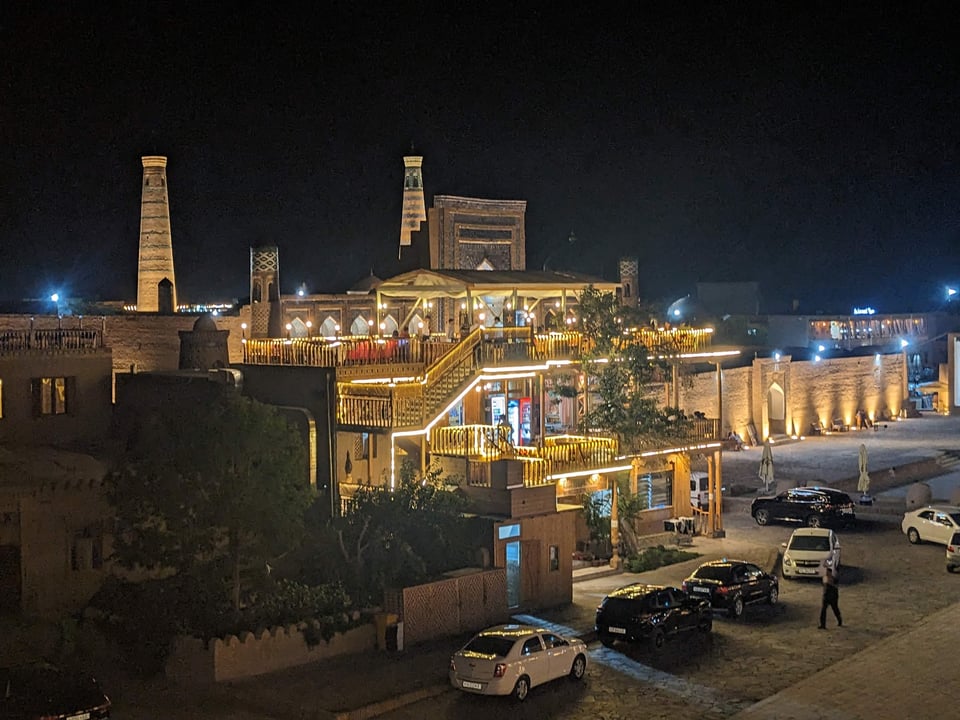Steve travels #28: Khan’t miss Khiva
My guidebook is emphatic: Forget about how far it is to get there, Khiva is unmissable. Everyone I have spoken to in the last week has said that tickets to Khiva (and just as importantly, tickets back to Tashkent) have been sold out for weeks. But the 10 year old guidebook would be very upset if I didn’t at least try.
So, over dinner in Bukhara I check and…there is precisely one sleeper carriage ticket leaving at 3:50am the following morning. And another sleeper coming back to Tashkent two nights later. It sounds like exactly the right level of bad decision to be quite appealing. Let’s do it.
I feel like a chump, being at the station 40 minutes before my train. But two bites into a weird pain au chocolat simulacrum, my train is announced, and we are summoned to board.
Oh boy is it cramped. I lever myself up into my top bunk and find it roughly 5 centimetres shorter than me. But I’ve become a better sleeper over the years, and somehow I get a couple of extra hours of shut-eye, periodically alternating sides, always with the legs bent.
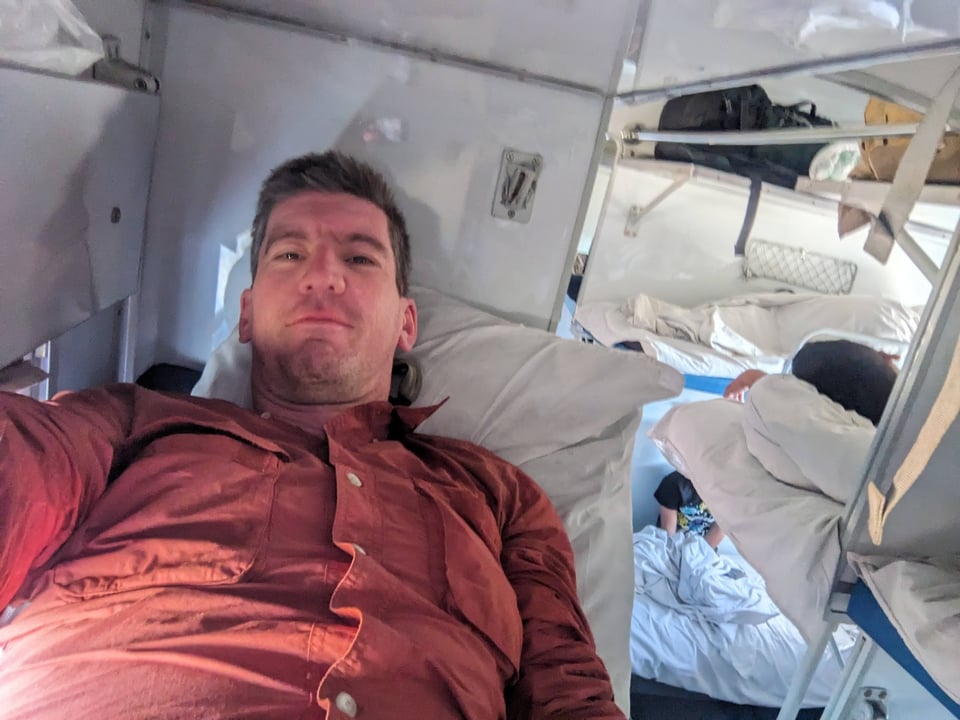
Later in the morning, as the carriage generally comes to life, the other problem emerges: there is not enough headroom to sit up. Coffins are fine for sleeping, but less good during the day. The view of the desert is very dull.

As with the other trains, there’s a series of food sellers passing through, but they move so quick and my vantage point doesn’t let me see what’s on offer before they’ve already passed through. It’s not just food: a family opposite takes the opportunity to buy a set of sandcastle-making tools for the kids.
Finally we arrive in Khiva, exactly on schedule. Perhaps the extremely generous stops at stations help with that. A young backpacker from England and I team up, and of course here’s Kim, an Australian I met in Bukhara a few nights ago.
I have a hot tip for the amusingly named hotel Qibla Tozabog, which is a winner: private rooms barely more than I’ve been paying for dorms, a swimming pool, and a lush breakfast buffet.
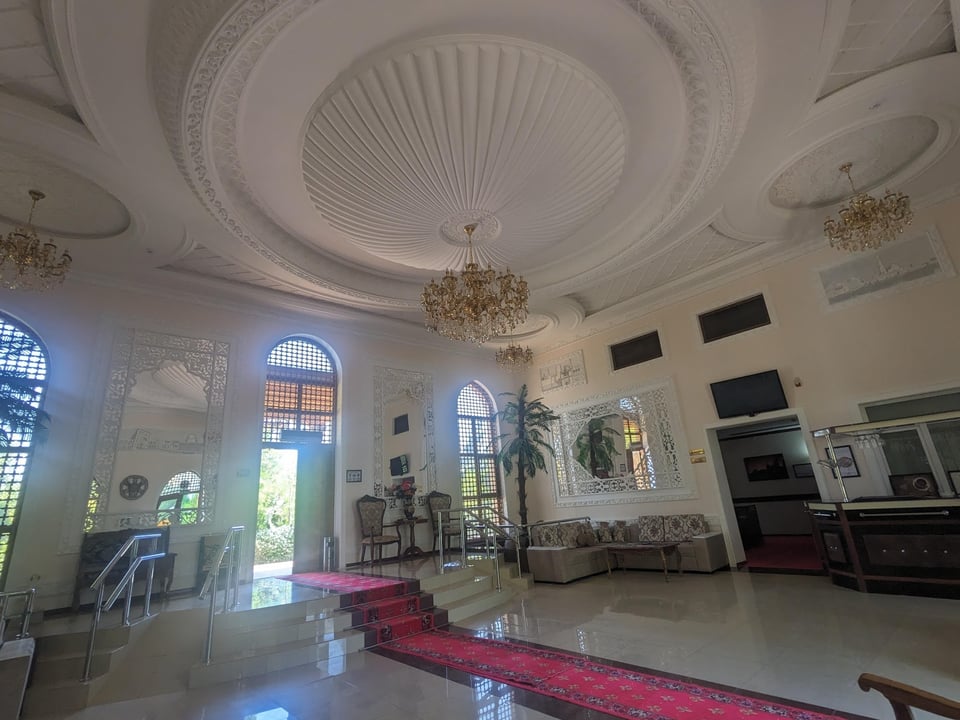
The heart of Khiva is a sort of “museum city”, a kind of time capsule of buildings preserved from the 19th century. Perhaps comparable to Mont Saint Michel or the “old town” parts of many European cities, it’s charming, but also feels completely artificial.
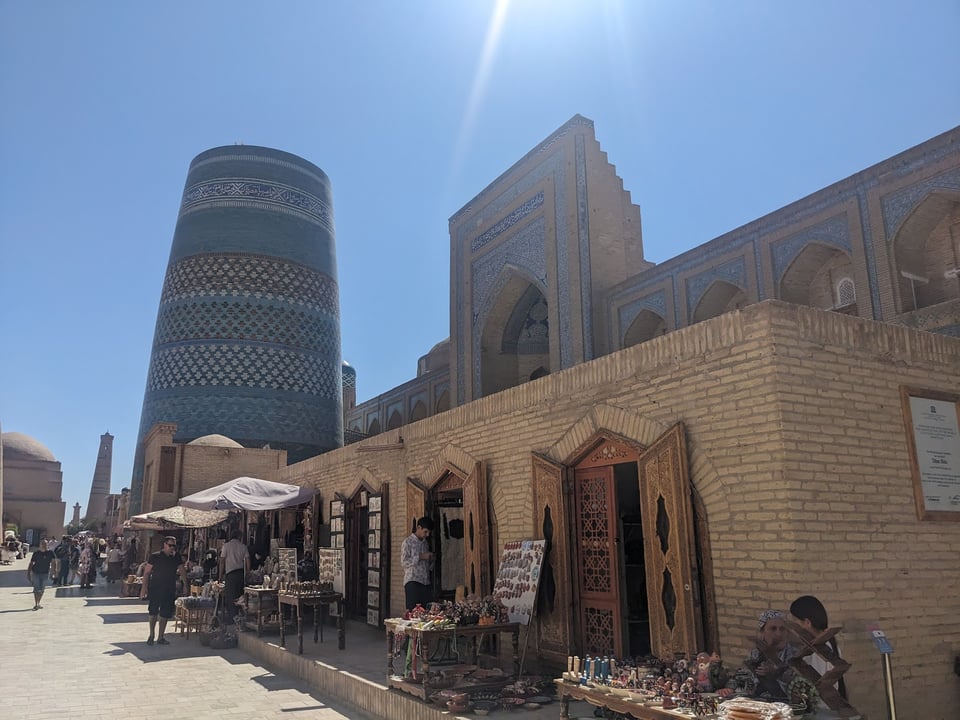
The progression from Tashkent to Samarkand to Bukhara to Khiva feels like it has reached its logical conclusion. Each step along, the balance shifts further from functional modern city to a collection of restored monuments supporting a tourism industry.
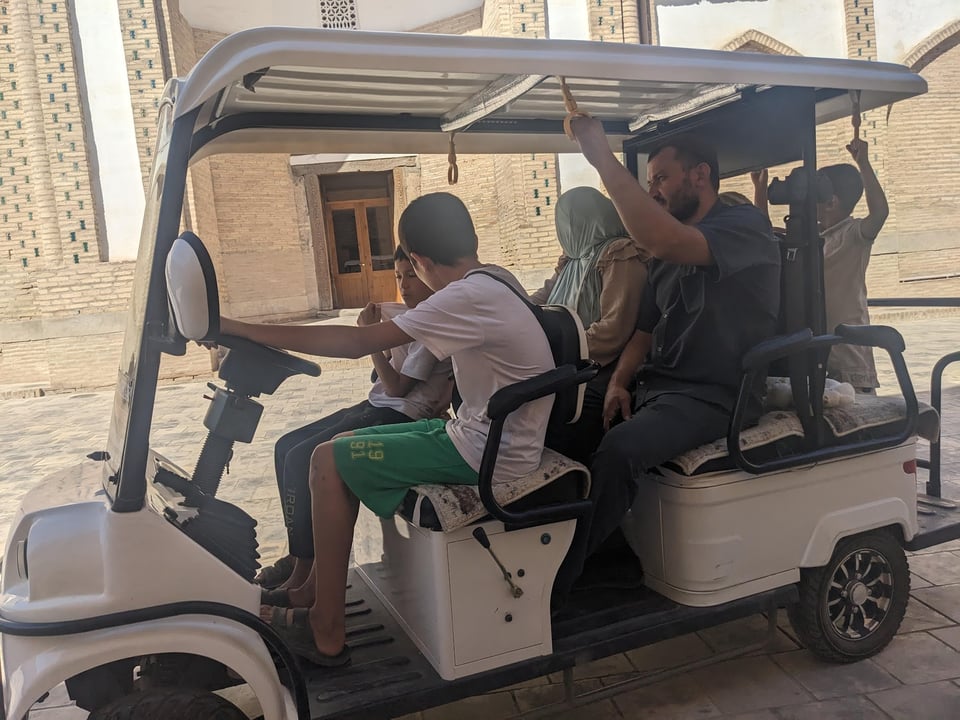
The history of Khiva is surprisingly hard to piece together simply by visiting: informational plaques are rare and poorly contextualised. But in essence, it’s an ancient town well-located within the fertile Amu Darya delta, otherwise situated in the desert. Like every city in this region, it eventually got destroyed by Genghis Khan, going through various waves of rebuilding and sacking. During the Silk Road years, it thrived as a slave trading centre, a trade burnished by raiding Russian caravans in the area.
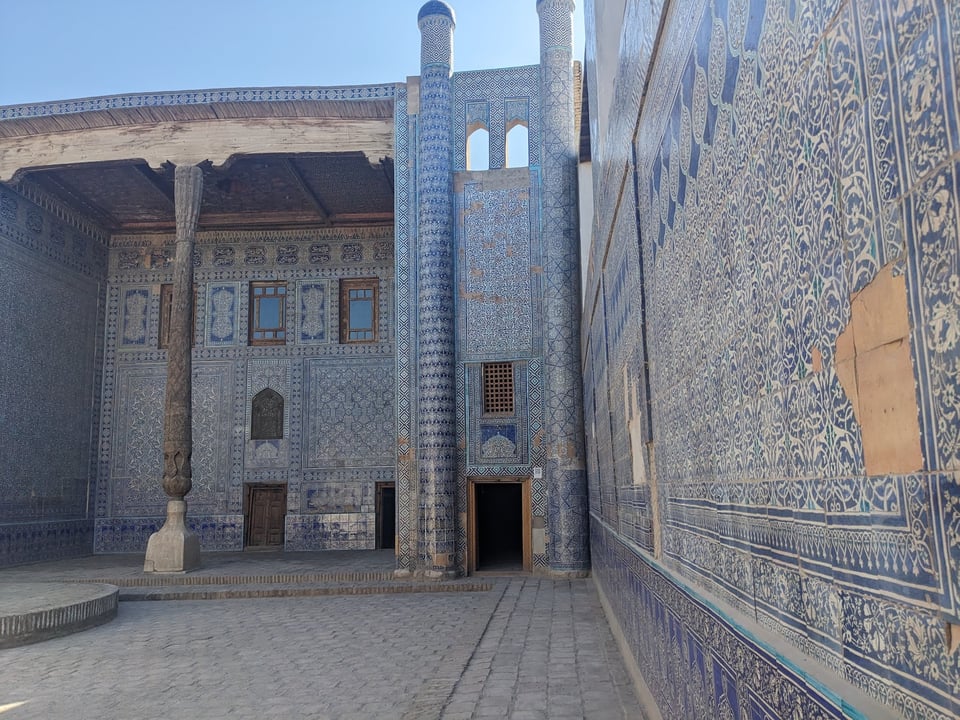
For a long time it was an independent city state with its own khan. It was briefly part of a soviet republic known as Khorezem in the 1920s before that merged into Uzbekistan. These days, cotton and melons are the main crops, contributing to the demise of the Aral Sea.

To wander about is impressive but somehow exhausting. Unlike Samarkand, which has a smallish number of incredibly impressive monuments, Khiva has an incredibly impressive number of smallish monuments. There is a very thick wall around the entire old city, with a dozen gatehouses, all of which were destroyed and then reconstructed. There dozens and dozens of madrassas, and endless numbers of other domed buildings.

The one truly unique building here is the unfinished Kalta Minor. This minaret (that’s what “minor” means) would have been over 70 metres tall, but even its completed one-third is impressive: it’s much wider than all the other minarets you see, and entirely coated in greenish tiles. The khan who commissioned it died, and the architect in charge wisely avoided adding to the tally of executed architects and bolted.
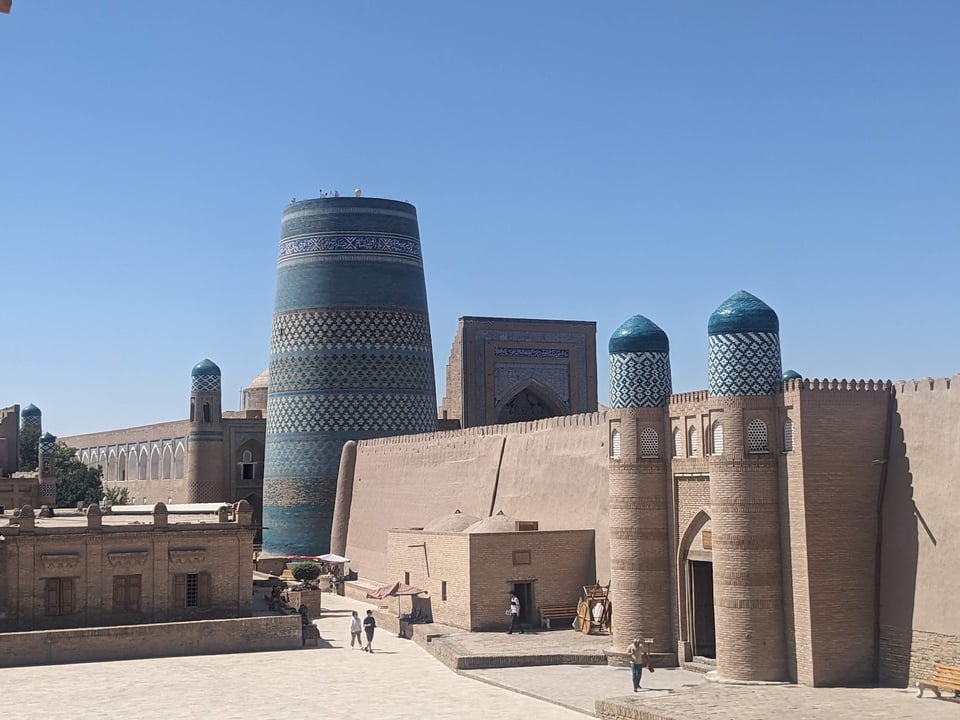
Misunderstanding leads me to buying an unnecessary “all museum pass”, and now I’m compelled to enter every building to see if it lets me in. The museums are mostly very dull, random collections of rugs and pots with no context. There is a universal agreement amongst Uzbek museum curators to never date any artefact more precisely than the century, even for the large number of twentieth century items.
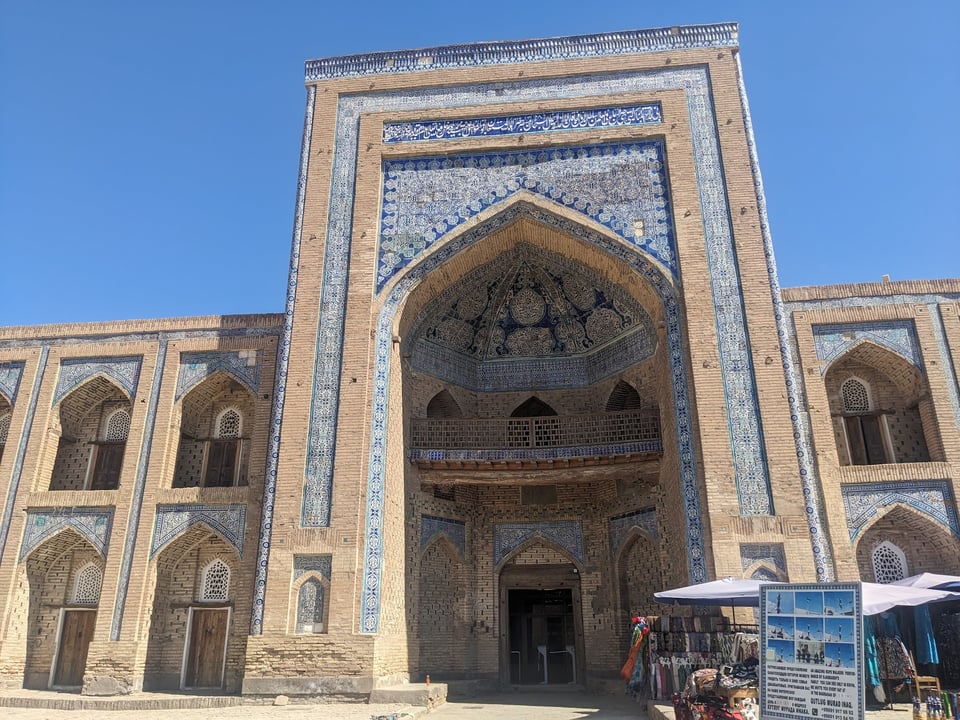
My frustration with the museums grows when after seeing photos, statues and paintings of men wearing furry hats, I’m still yet to see a single explanation, or even acknowledgement of these. Why are men in the desert wearing warm hats that look like giant afros?

It takes Wikipedia to answer: these are chugurmas, traditional headwear for men in this region made from animal pelts. Supposedly this keeps you cool in summer and warm in winter. I remain skeptical.
The Qibla Tozabog palace next to my eponymous hotel is a more interesting experience, if only because I’m not supposed to be there. By sheer coincidence, I arrive at the locked main door at the exact moment as a group of researchers, and pass nonchalantly through. I get a solid ten minutes before the jig is up and they boot me out. It’s a more recent building and the interior is a strange fusion of European chandeliers and layout with a rather gaudy colour scheme with the kind of intensely intricate decoration you expect.
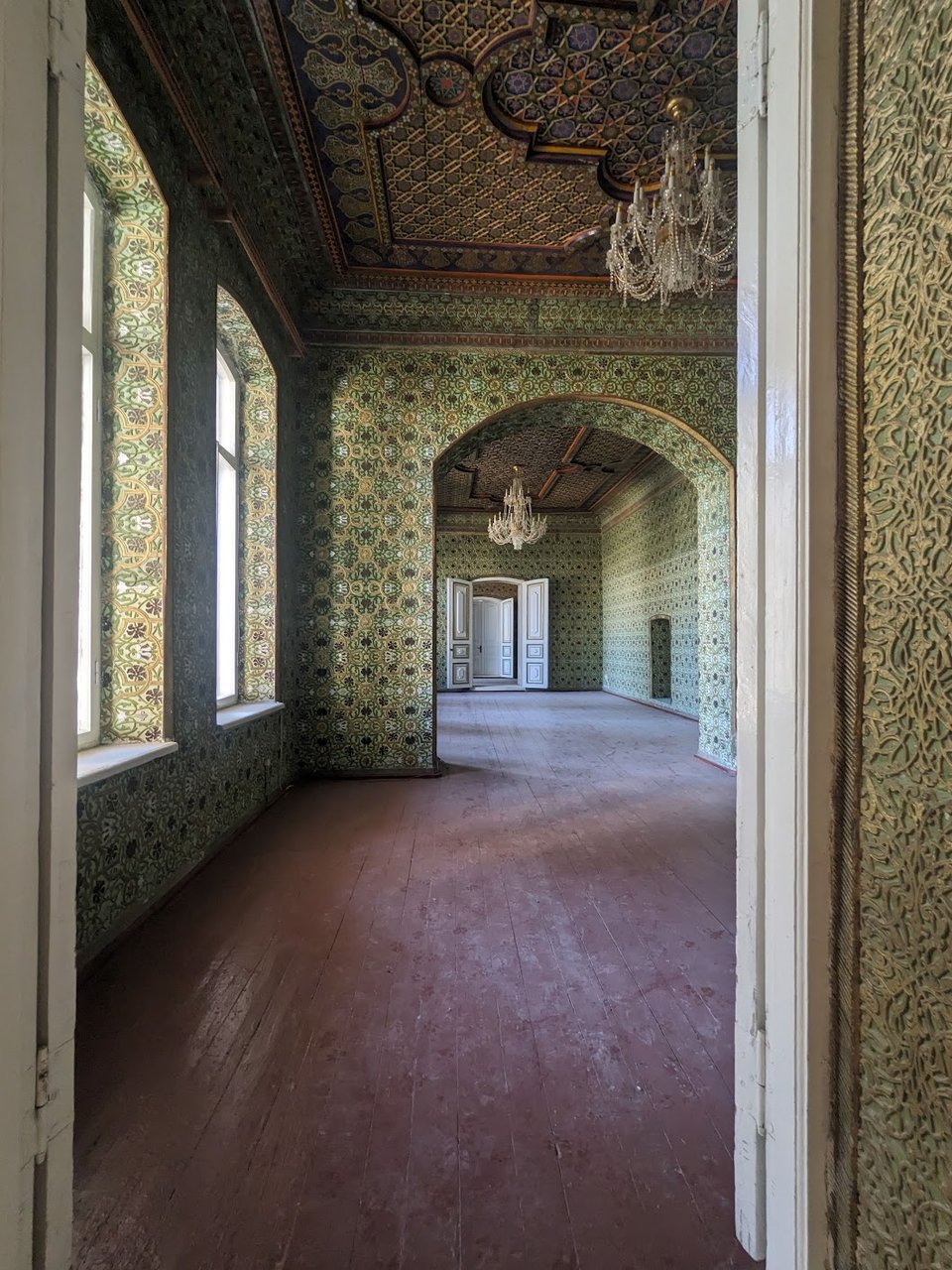
Nurullaboi Palace is a more conventional experience, explored with Almaty hostel buddy Paula, whose journey has once more intersected with mine. It’s not an especially old complex, but still you feel that the feeling of age and wear has been thoroughly restored out of it. The most intriguing aspect is what look like old fireplaces decommissioned and thoroughly covered in a layer of garish ceramic tiles.
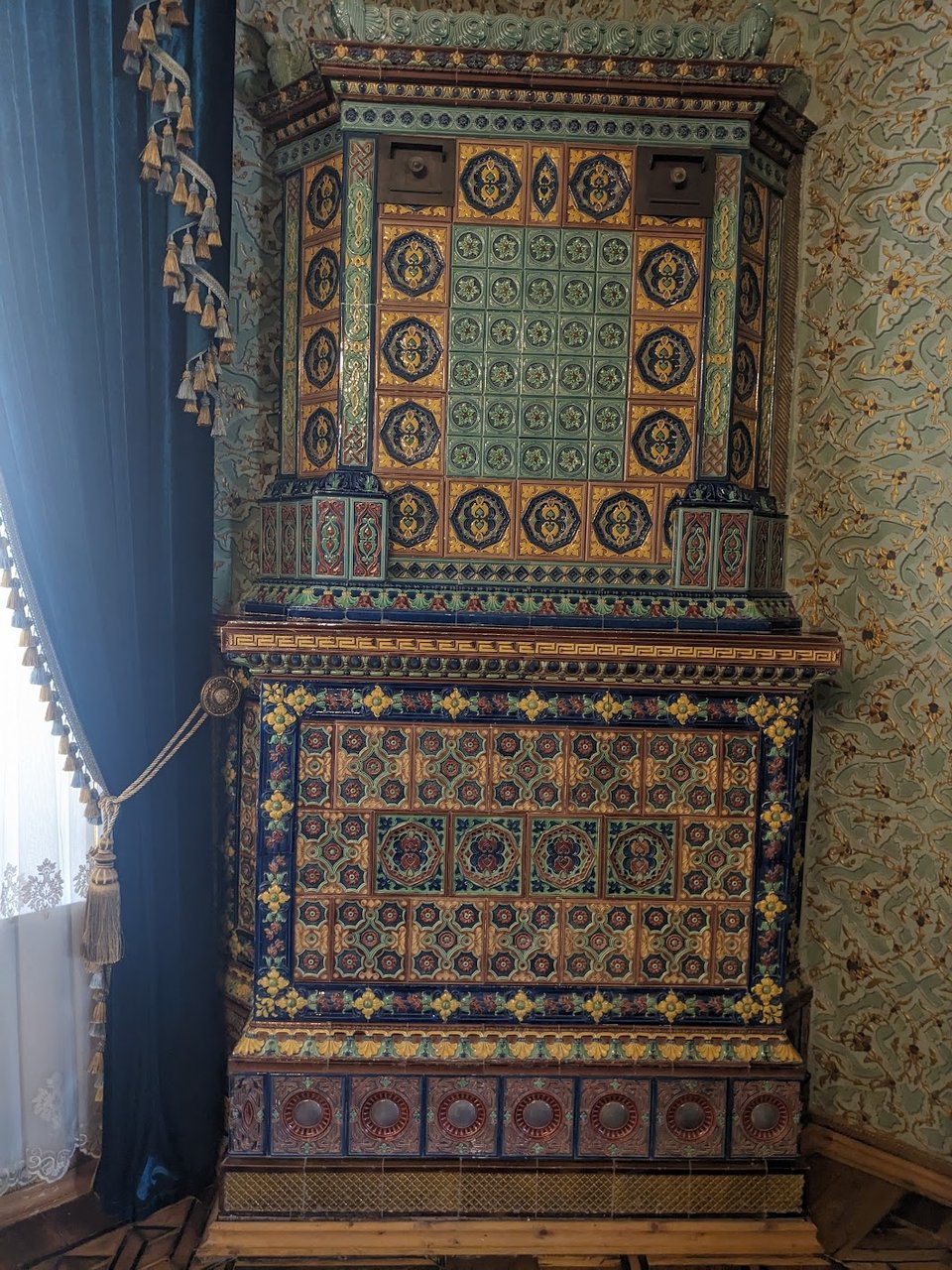
What other monuments did I visit? I couldn’t tell you. They pass in a blur, names and purposes not well communicated, mostly the same mud brick shade of brown. I think I’m monumented out.
